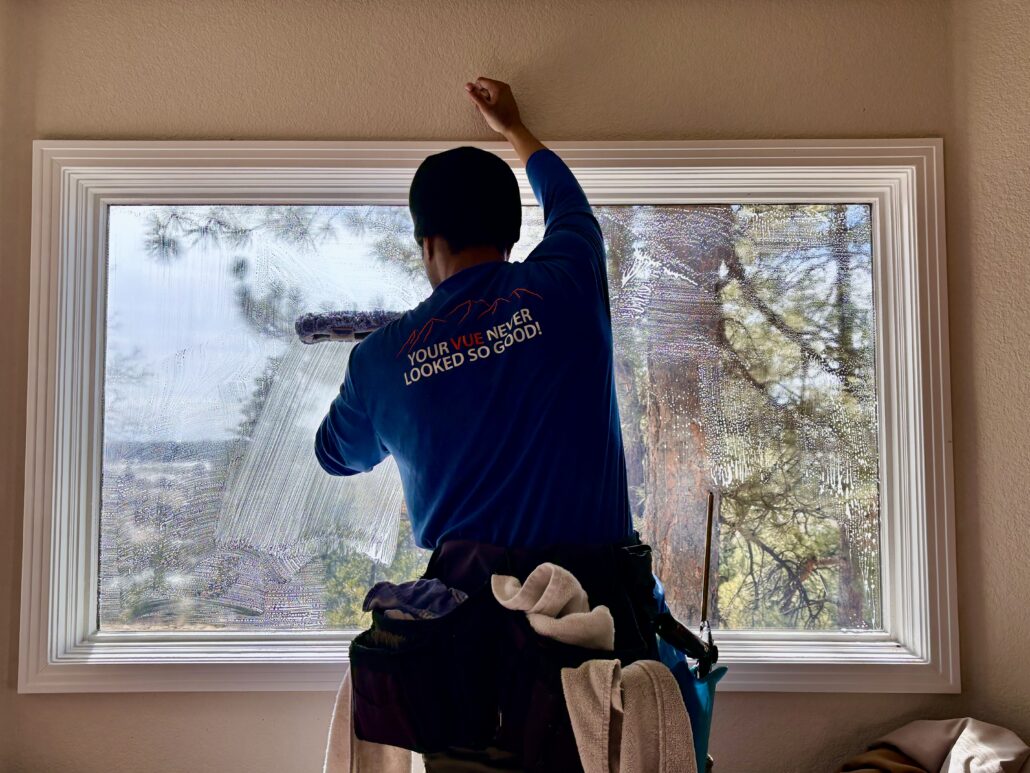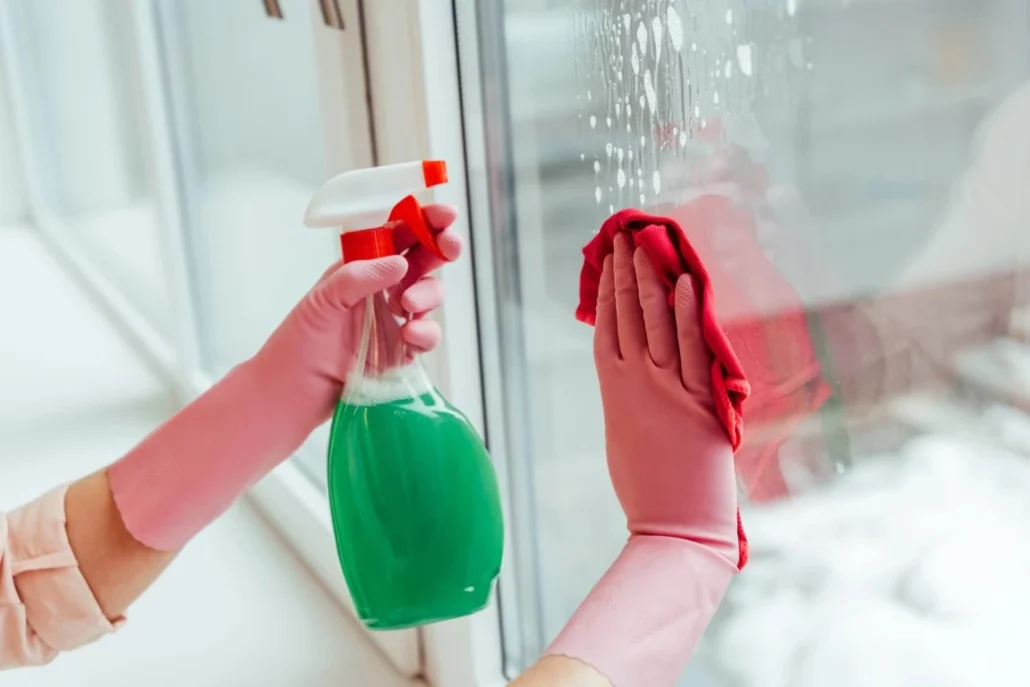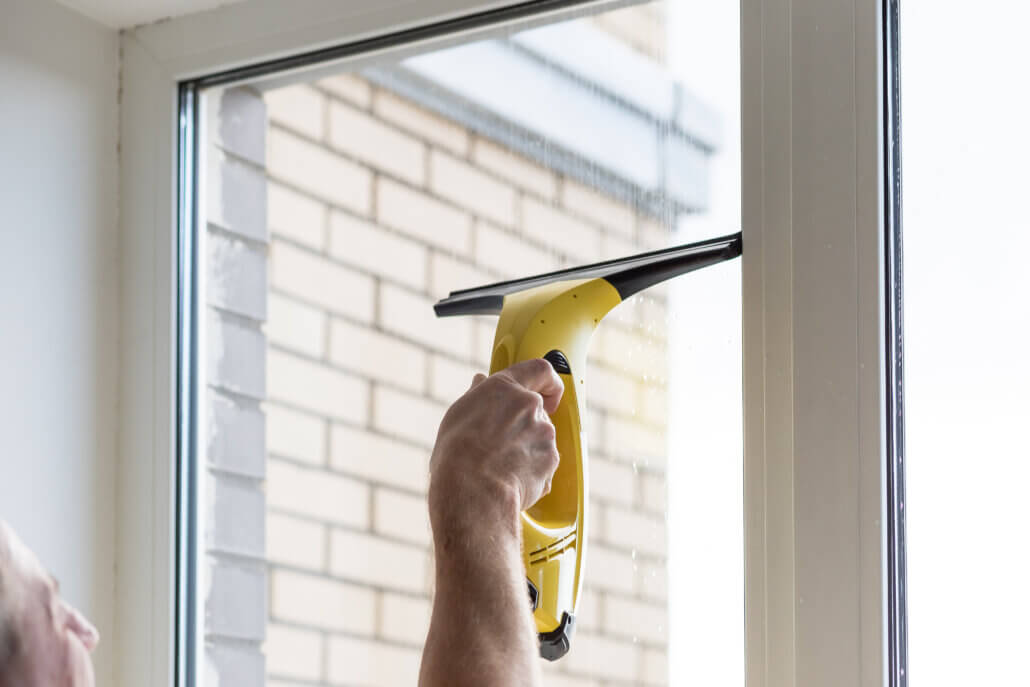Why Are My Windows Cloudy?

Cloudy windows are a common complaint among homeowners. Whether it’s just one window or all of them, less-than-clear glass can have a significant impact on curb appeal, indoor light, and your views of the outdoors. While some cloudiness can be solved with a quick wipe-down, other situations are more complicated than that, requiring expert evaluation.
At Vue Window Cleaning, we understand the frustration that can come with cloudy windows. If you’re looking for ways to keep your windows crystal clear, keep reading to learn some common causes of cloudiness and how to identify them, some DIY remedies, and when it’s best to call the professionals.
Common Causes of Cloudy Windows
Thanks to modern manufacturing innovations, the glass used in our windows is perfectly clear and smooth, allowing you to see outside without distortion. While windows may start out clear, they can become cloudy over time, impacting their functionality and aesthetics.
Here are some common causes of cloudy windows:
Condensation Between Panes
If you have double- or triple-pane windows, condensation can get trapped between the panes, resulting in a cloudy appearance. This usually happens when there’s a broken seal, which allows moisture to get into the insulated glass unit.
Hard Water Stains
When hard water — either from the rain or your sprinkler system — dries on the glass, the minerals it contains can linger, leaving behind a hazy residue. This cloudiness is difficult to remove with standard cleaning.
Improper Cleaning Products
The use of improper cleaning products, such as ammonia-based or harsh chemical cleaners, is another common cause of cloudy windows. These products can leave streaks, residue, or film on the glass. There’s also the possibility of soap buildup from overuse or poor rinsing.
Aging or Deterioration
Over time, UV damage and wear to the glass surface can cause older windows to become cloudy. Worn or degraded low-E coatings can have the same effect, making your windows look hazy.
How to Identify the Source of the Cloudiness

Now that you’re aware of the most common sources of window cloudiness, let’s talk about how to identify the source, whether it’s interior, exterior, or between the panes.
First, run your finger over the glass to check if the haze is on the surface. Check for patterns like streaks, water spots, or an all-over foggy appearance. Do this to both the interior and exterior sides. If the haze comes off when you touch it, it’s probably due to either hard water stains or improper cleaning.
Then, look for moisture inside the windowpane. If moisture is present between the panes of glass, you likely have a faulty seal, which will need to be addressed by a professional.
What You Can Do About Cloudy Windows
Once you have a good idea of the cause of your cloudy windows, it’s time to do something about it. Fortunately, there are both DIY and professional solutions that can help you keep your windows crystal clear.
Professional Window Cleaning
Professional window cleaning is an excellent option for removing surface-level haze, hard water stains, and residue. Professional technicians are equipped with specialized products and techniques that are more effective at achieving that perfect shine than simply wiping them down on your own.
Furthermore, professional window cleaners can help you determine the root cause of the cloudiness and recommend ways to avoid future issues.
Seal Failure Solutions
Windows with failed seals may need to be replaced — not just because they allow moisture to infiltrate and cause fogginess, but also because they are less effective at insulating your home. As a temporary solution, look for companies that offer defogging services to tide you over until the replacement can be completed.
Preventative Maintenance Tips
It’s much easier to prevent cloudy windows in the first place. Here are our top tips for preventative window maintenance:
- Use proper cleaning agents that are non-abrasive and ammonia-free.
- Seek regular professional cleaning to prevent buildup.
- Keep sprinklers pointed away from windows.
- Inspect windows for seal integrity periodically.

When to Call the Pros
While some cloudiness can be resolved via DIY methods, there are some situations where it’s best to call the pros, including:
- If you’ve cleaned the window and it’s still foggy.
- When condensation is inside the panes.
- When hard water stains or film don’t come off with household methods.
When you hire a professional window cleaning service, you get the benefits of proper tools and techniques, saved time, streak-free results, and a trained eye to detect underlying issues.
Get Rid of Cloudy Windows with Vue Window Cleaning
If you’re struggling with cloudy windows, call Vue Window Cleaning. With our help, you can restore your windows’ crystal clear shine and leave fogginess in the past.










